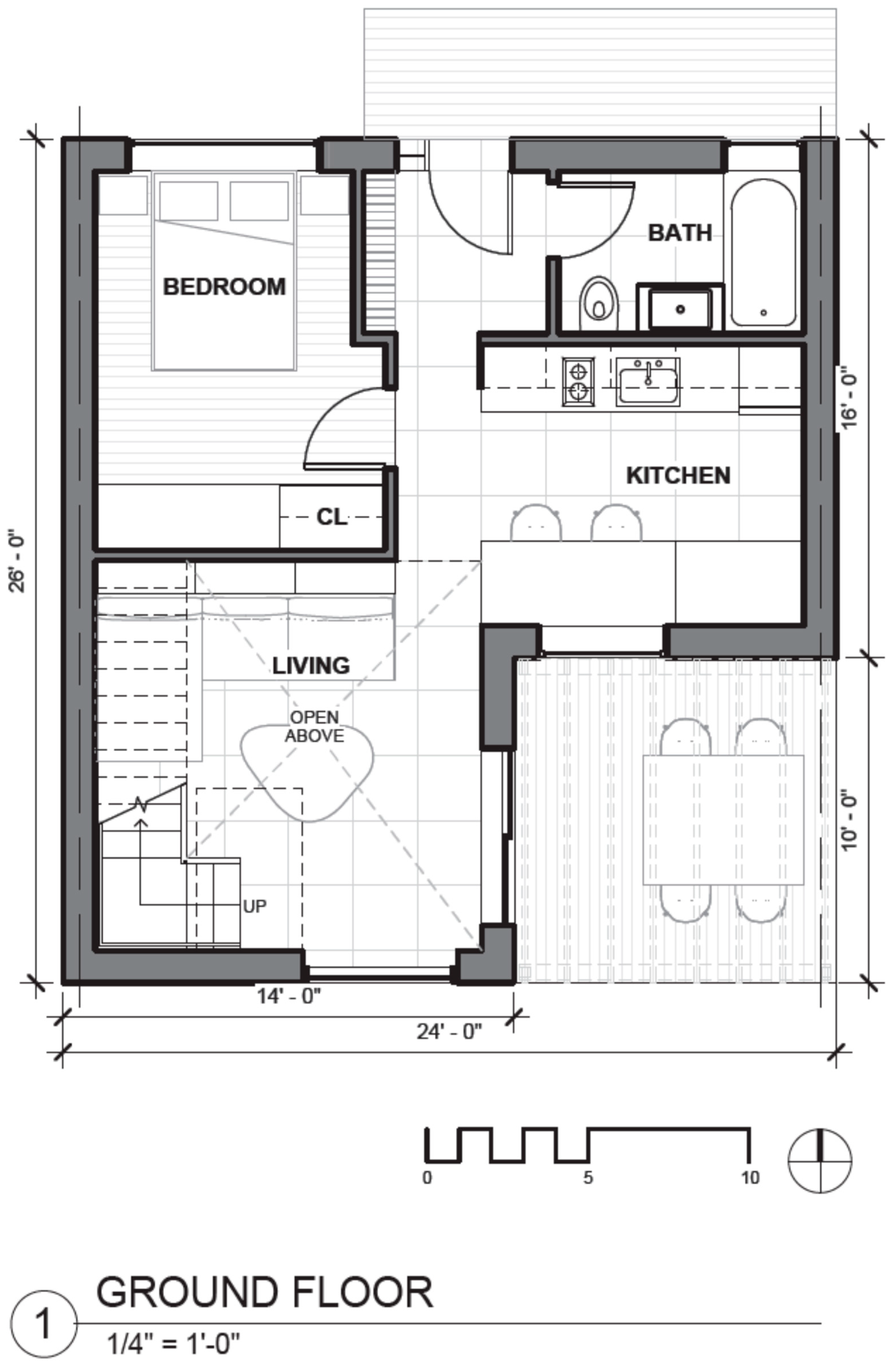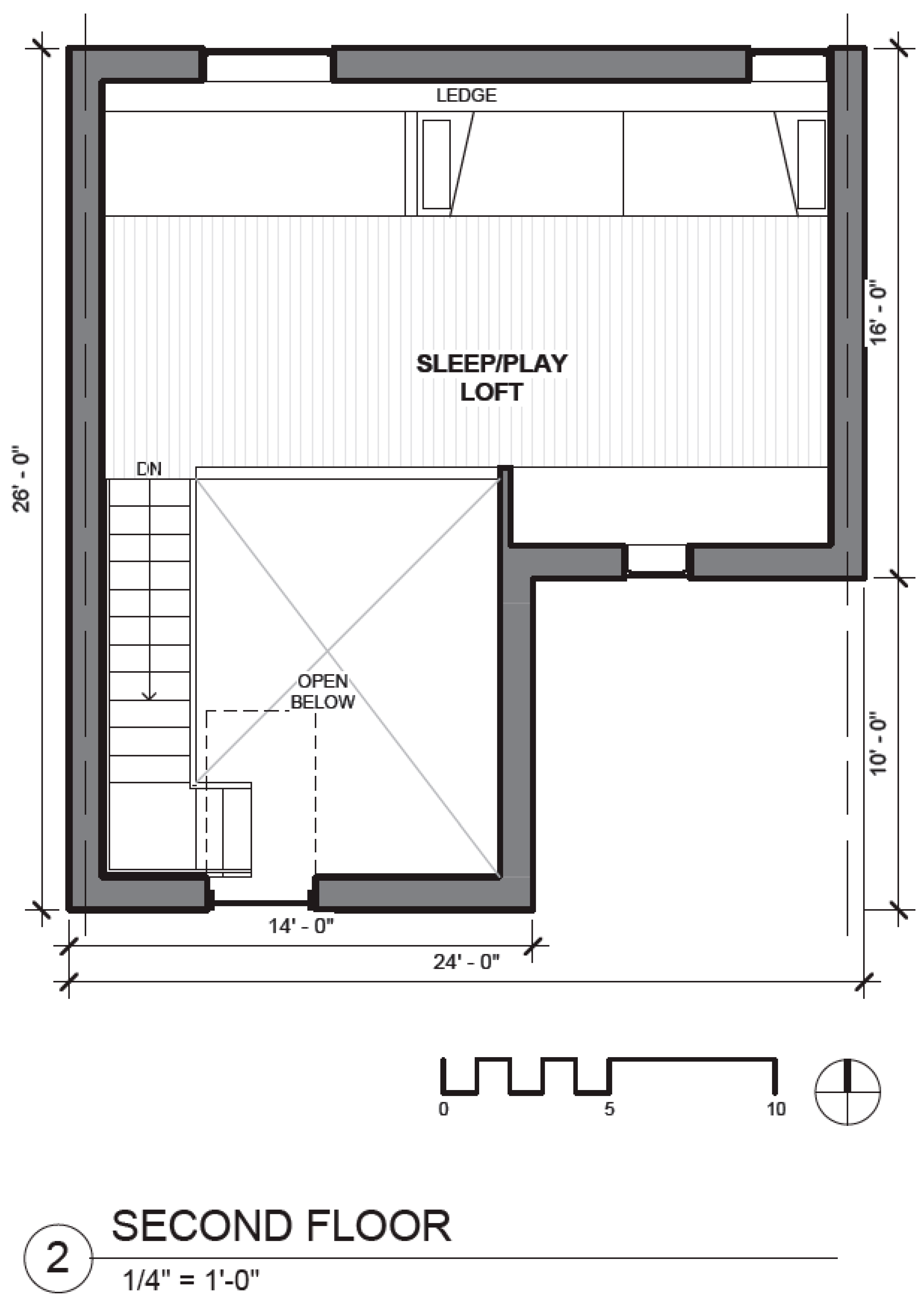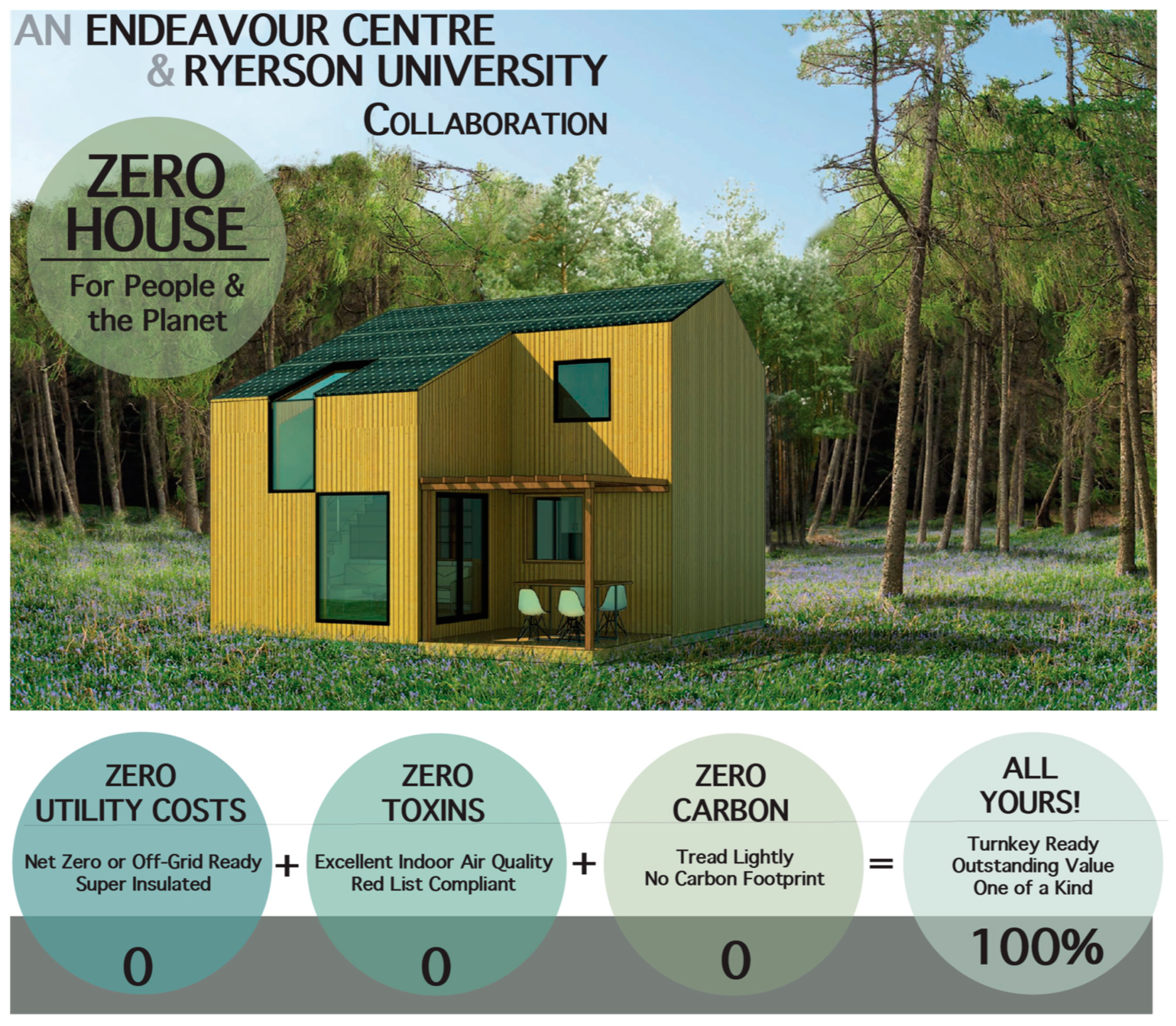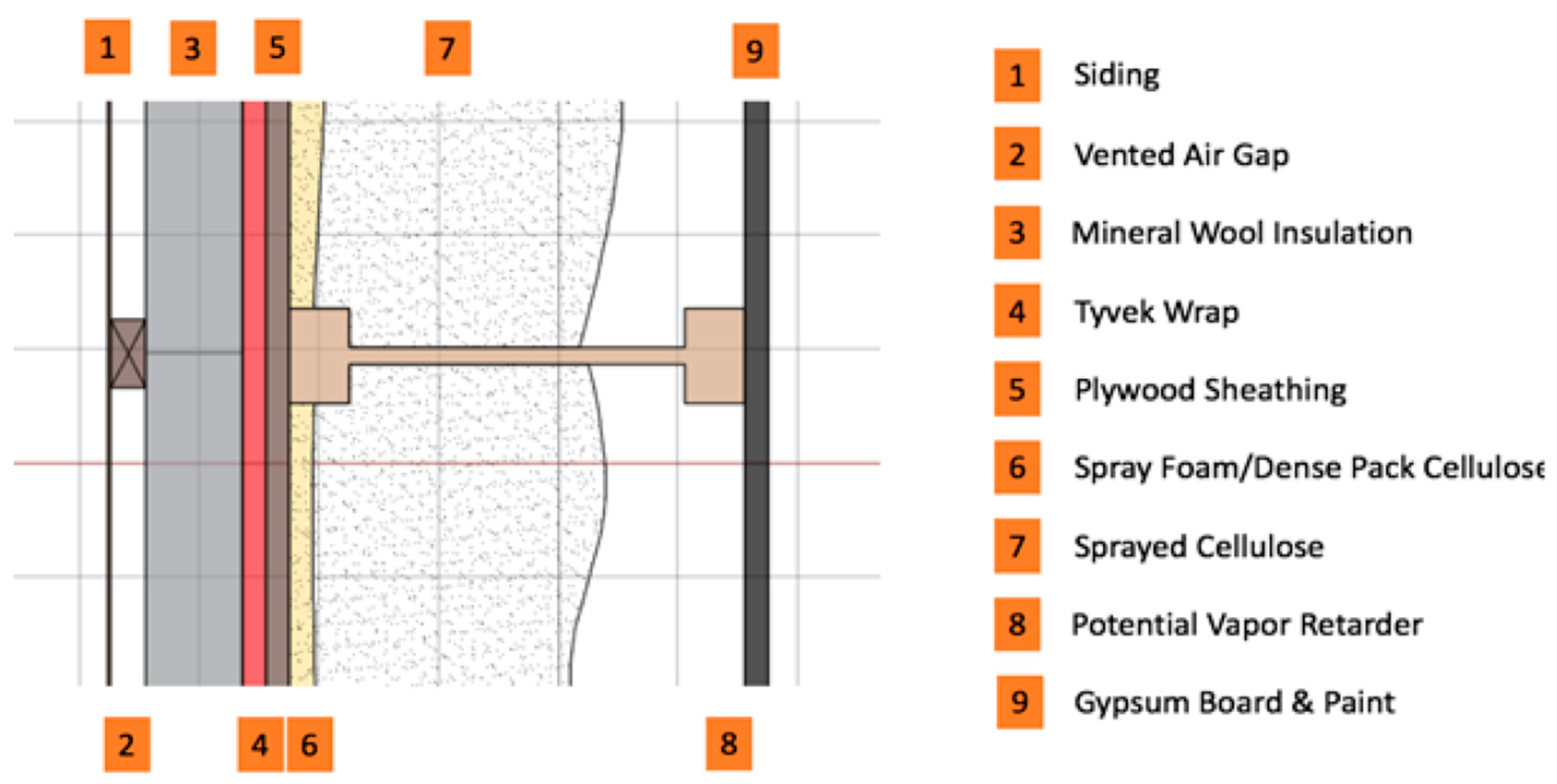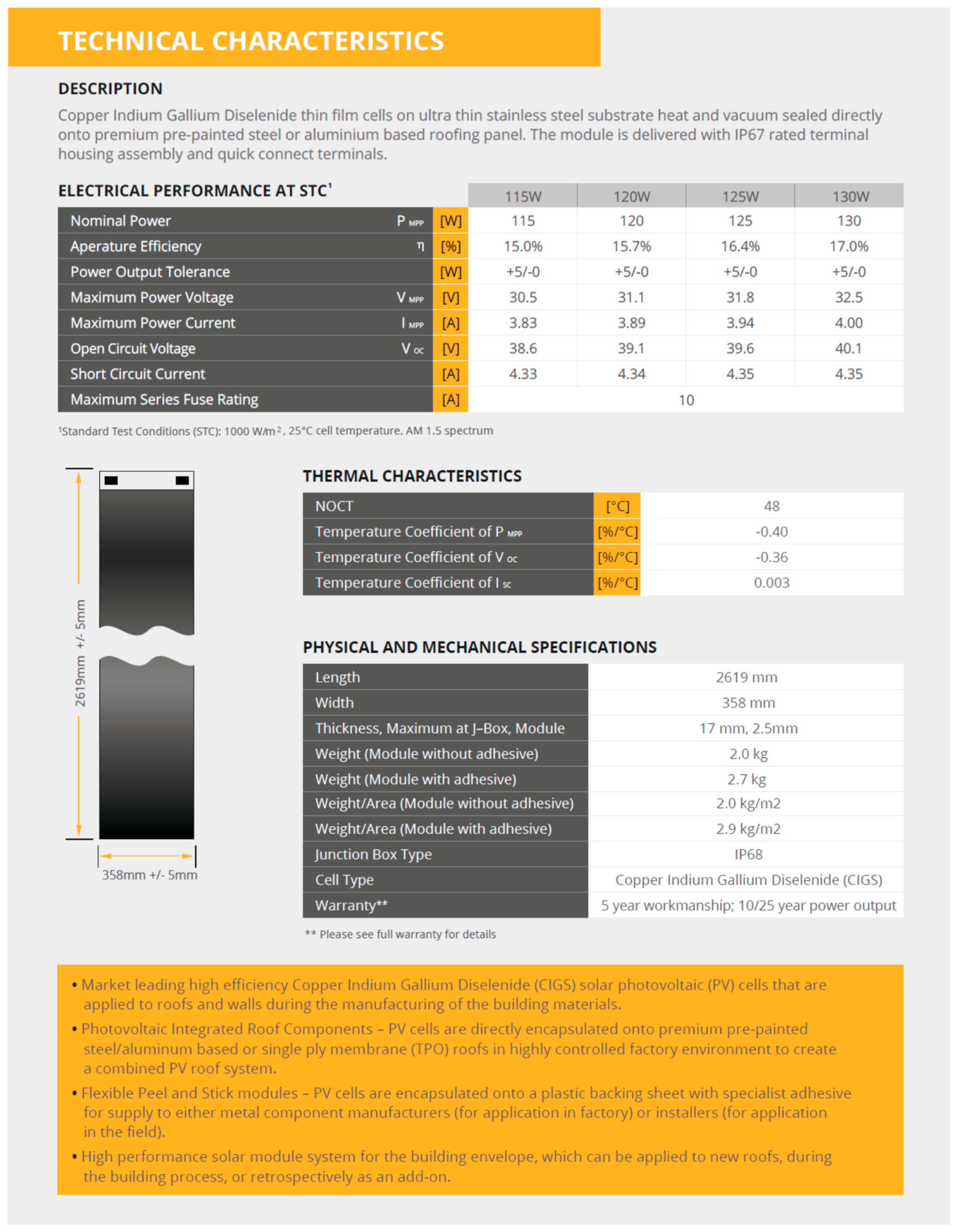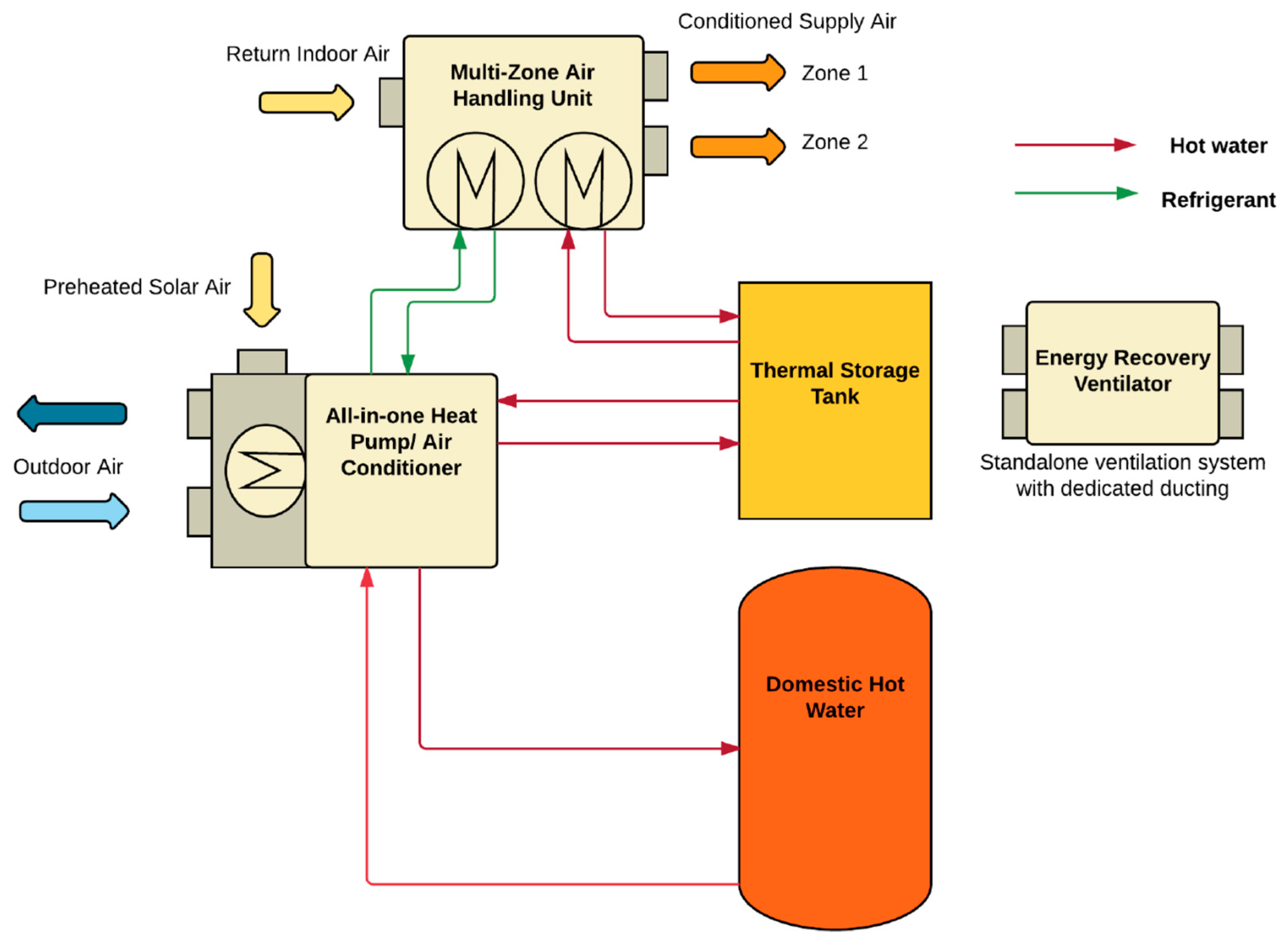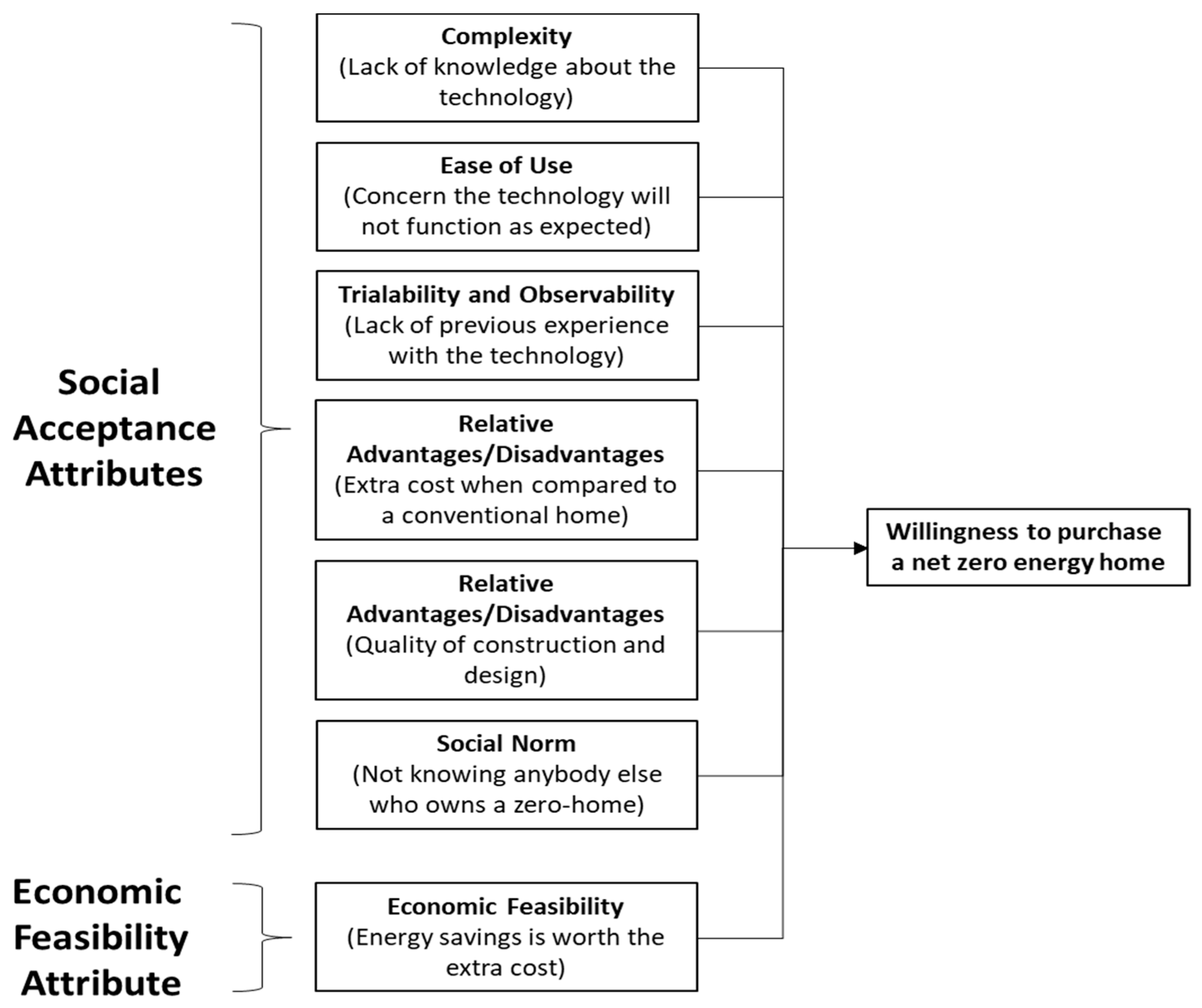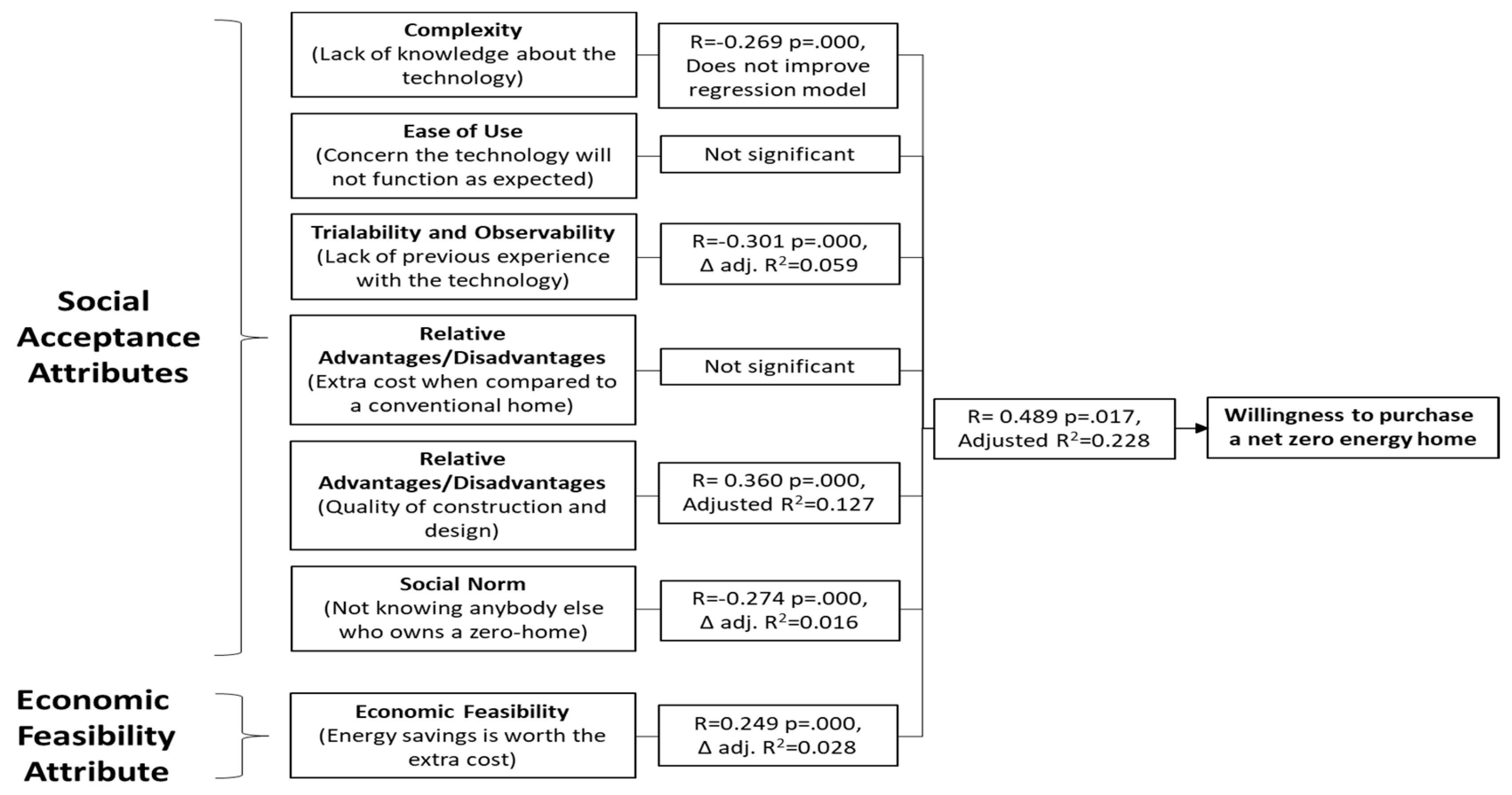1. Introduction
With climate change becoming a serious challenge for society, both industry and academia have prioritized the study of technologies to address climate change. Additionally, governments too have stepped up their efforts to tackle climate change. Globally, the Intergovernmental Panel for Climate Change (IPCC) has identified the building industry as a critical sector to focus on for reducing energy use and greenhouse gas emissions [
1]. As one of the first signatories to the Paris Agreement (
https://unfccc.int/process-and-meetings/the-paris-agreement/the-paris-agreement. Per the Paris Agreement the signatories would pledge to limit the rise in global average temperature to 1.5 degrees Celsius.) on climate change, the Canadian government has set the goal of reducing greenhouse gas (GHG) emissions by 2030 to 70 per cent of 2005 levels and buildings are one of the single largest emitting sectors in the country, just after transportation [
2]. In 2014, for buildings specifically, the carbon dioxide equivalent in emissions totaled 88.0 megatonnes representing over 12% of the total emissions released in Canada in that year [
2] and accordingly reducing emissions associated with energy use by buildings is emerging as a priority-area in accomplishing these targets [
3].
Attempts have been made since 2004 to address the impacts of the Canadian building industry on the environment when a group of stakeholders started the net zero energy home coalition aimed at ensuring that by 2030 new home construction would be able to meet net zero energy standards [
5]. In 2006 the Canada Mortgage and Housing Corporation (CMHC) introduced the “Equilibrium Sustainable Housing Demonstration Initiative” to design and build net-zero energy buildings (NZEBs) (In practice the terms Net Zero Energy (NZE) and Zero Net Energy (ZNE) communicate the same meaning as Zero Energy Buildings (ZEBs). To avoid any confusion, this study will use the term net zero energy homes to imply dwellings whose net energy consumption (consumption of energy = production of energy) is zero.
https://www.energy.gov/sites/prod/files/2015/09/f26/A%20Common%20Definition%20for%20Zero%20Energy%20Buildings.pdf) throughout Canada. Eleven single residential homes and 1 multi-residential building were constructed under that program [
6]. The first Equilibrium demonstration house was built in Quebec called EcoTerra low energy house and consumption of energy in this house was found to be about 12% that of a regular Canadian house [
5].
Under the guidance of 11 Canadian Universities, National Science and Engineering Research’s, Solar Buildings Research Network (SBRN; 2005–2010) and continued further by the Smart Net Zero Energy Buildings Strategy Research Network (SNEBRN; 2011–2016), has advanced research to help reach the net zero energy target. A related international effort was launched by the International Energy Agency (IEA)’s Solar Heating & Cooling Programme (SHC Task 40/EBC Annex 52 (
https://www.iea-shc.org/tasks-number and
http://task40.iea-shc.org/)) and was spearheaded by a Canadian Team drawn from the above mentioned research network. SHC Task 40′s work helped in further understanding designing and modeling of net zero energy homes [
7,
8].
In 2013, Natural Resources Canada (NRCan (
http://oee.nrcan.gc.ca/publications/statistics/trends/2015/totalsectors.cfm#L1 last accessed on Sept 11, 2019)), a federal government ministry, funded a net zero energy home demonstration project with Owens Corning Canada that resulted in five homebuilders in four provinces, building a number of single family houses and townhomes, and one multi-unit residential building. These homes were completed in 2016 but the performance results have yet to be made public.
Net zero energy homes, are relatively recent innovations and while technical feasibility research has been sponsored by the afore-mentioned initiatives in Canada it remains unclear whether consumers are interested in purchasing such a home. As we discuss further in our literature review section, a wider adoption of net zero energy homes is constrained by the prevailing reluctance of home builders to build such homes. Home builders are skeptical of potential homeowners’ acceptance of net zero energy homes due to the higher initial prices of such a home [
9,
10]. The findings from our research will contribute to a relatively sparse body of literature on the benefits of the net zero energy home concept, especially in the Canadian context, and they will provide evidence of existing barriers to consumer adoption and whether to persevere in this area for meeting future emissions reductions and decreasing the environmental footprint of residential housing. Our paper is structured as follows: First, we provide a review of the literature on net zero energy homes and the adoption of innovations in sustainable housing. From that review, we develop a conceptual model for identifying barriers to the adoption of net zero energy homes and test it with a survey instrument. We administered the survey to members of the general public who had the opportunity to view and experience a net zero housing demonstration project. This project and the methodology used to acquire our data are described within our methods section followed by a discussion of the results of our statistical analysis of the data derived from the survey. We conclude by addressing the implications for developers and planners in the residential building sector arising from our study, and propose additional research that would assist in dealing with identified limitations in our research.
2. Literature Review and Theory
Research on the role that low energy and net zero energy homes can play in addressing climate change worldwide is a relatively new area. Buildings (and their associated electrical and heating requirements) are responsible for a significant proportion of the total energy and carbon emissions worldwide and as such, the building sector can be integral to the implementation of sustainable development strategies [
11]. Accordingly, net zero energy homes have seen an increased interest from a number of countries and jurisdictions and many have adopted this concept within their future building-energy goals. The concept of net zero energy homes implies that a building is designed to not only be low-energy consuming but can also be able to generate energy for its use thereby creating net zero energy consumption. The building owners would also have the flexibility to feed excess energy into the local electricity grid. They would also be able to purchase energy from their local grid to supplement their building’s generating capacity when needed. The net zero energy home concept combines two design strategies: Renewable energy technologies (RET) and energy efficiency measures (EEM) [
11]. Studies have shown that sustainable housing would benefit from inclusive design initiatives that recognize the need to address market demands that can be diverse and changing [
12]. Aside from meeting the personal preferences of building owners, the utilization of energy efficiency measures have traditionally presented themselves as a more optimal solution to addressing energy costs than doing nothing at all. In their life cycle analyses of net zero energy homes, Marszal and Heiselberg, 2011 [
13] found that in building a cost-effective net zero energy home the energy efficiency design strategy provides the greatest impact by minimizing energy use. Thus the remaining energy need is small and can be met through renewable energy generation.
With decreasing costs of renewable energy sources such as solar photo voltaic systems (Solar PV) and advances in energy efficient building designs, the net zero energy concept presents itself as a potential solution for the building construction sector to meet sustainability goals [
13]. However, current approaches to housing design appear to be ignoring the more sustainable options suggesting that market forces continue to be a barrier to the widespread adoption of net zero energy housing by residential and multi-residential builders. It is important to recognize that residential home builders are the most important decision makers in the housing supply chain and therefore can influence how new housing adapts to changes in technology, demography and housing policy. Furthermore, their choice of designs directly influences the energy consumption of the homes they build. Yet evidence exists that homebuilders may be one of the principal barriers to adoption of innovation in construction and building design [
9]. But why are homebuilders reluctant to change their designs to ensure greater energy efficiency? One answer is the homebuilder’s perception of what the homebuyer will be attracted to. As with any product there is a need to satisfy the basic wants of the consumer either by providing the lowest price or through differentiation that justifies a higher price. In either case the consumer is seeking some form of value from their purchase [
10]. In the residential and multi-residential housing market it is this value proposition that builders are seeking to create in order to recover their investment through the sale or rental of their buildings. The success of sustainable housing rests on creating a value proposition that exceeds conventional housing. In a study of the net zero energy concept in major cities in Europe, researchers [
14], found that net zero energy homes have led to energy efficiency, conservation and increased renewable energy generation but social acceptance and economic feasibility are factors that need to be considered too when seeking greater consumer adoption of net zero energy technology.
The innovation literature has identified various social acceptance models, notably the theory of reasoned action (TRA) model [
15] whereby the actions of consumers could be predicted by recognizing the relationship that exists between the subjective norms, attitudes and behavioral intentions of consumers. As that model is limited by the assumption that consumers always act rationally, which may not always be the case, an extension to TRA to include the notion that consumers are also controlled by their beliefs resulted in the theory of planned behavior (TPB) [
16,
17]. This was followed by research by Davis, 1993 [
18] who developed the technology acceptance model (TAM) in which the likelihood of consumer use was predicted by examining the perceived usefulness and ease of use of the underlying technology [
19]. The TAM model was further refined when social norms as a factor for predicting adoption was added [
20]. Rogers diffusion of innovation (DOI) model originally published in 1962 and currently in its fifth edition in 2003 is another model often applied to study how innovations gain wide acceptance [
21]. In that model the consumer’s adoption decision is based on certain perceived attributes of an innovation. These attributes include: The relative advantage of the innovation over available products using an existing technology in the market; the ability of the innovation to address consumer’s needs, values and experience; the complexity associated with using the innovation; and the consumer’s ability to test or observe the innovation at work.
The combination of these theories supports the importance of addressing consumer knowledge-related attributes, relative advantage over existing products, and the compatibility of the innovation with both the consumer’s own values and attitudes, and societal norms [
22,
23]. When considering what encourages greater consumer adoption, we have chosen to recognize social acceptance attributes in combination with the economic feasibility attribute [
14]. In turn, we also recognize that factors that undermine these attributes in regards to net zero energy homes would represent barriers to their adoption by consumers. We discuss them further below.
2.1. Knowledge-Related Barriers
Knowledge barriers refer to both knowledge deficiency about the science of technology of net zero energy homes and knowledge inadequacy about how to use them. Rogers, 2003 [
21] argued that consumers are reluctant to shift to using energy efficient technologies due to a lack of information about them. As a result of interviews with eleven Swedish construction companies, Persson and Grönkvist, 2015 [
24] identified lack of information as the largest barrier in the adoption of low-energy technology in the building industry. However, they also found that there is interest among customers of various ages to learn more about the technology when presented with information. In a 2005 study of the English building industry, 78% of builders surveyed indicated that a lack of information about the costs of net zero energy homes were a major barrier in purchasing them [
25]. Another significant issue in adopting low-energy housing was consumer skepticism about construction subcontractors due to the contractors’ inability to provide information, especially in regards to potential hidden costs [
24]. Zhao et al. (2015) studied green buildings in China and identified the general public’s lack of knowledge about environmental and energy saving benefits of the technology as a significant barrier to adoption [
26].
Risks associated with livability in a net zero energy home also presents a major barrier to the adoption of the technology, as customers can have concerns about attaining and maintaining a comfortable indoor temperature with a reduced energy house [
24]. Consumer concerns regarding ease of use and performance are further accentuated by the housing construction firms themselves, as project managers within such firms have shown a preference for proven, conventional housing technologies, even when cost efficiencies are evident in the more energy efficient option [
27]. Compounding the problem is the lack of formal classifications or qualifications for energy-efficient houses, resulting in consumers facing a risk of receiving a product that underperforms compared to expectations [
28].
2.2. Relative Advantage to Existing Technology Barriers
A net zero energy home has the potential to reduce energy costs [
29] while adding to the security of energy supply [
30], both of which can be a relative advantage when compared to conventional housing. However, the upfront technology cost remains a barrier [
24]. Furthermore, house buyers tend to justify their purchase based on their immediate visible costs and not potential future benefits arising from energy efficiency or lower long-term environmental harm [
31].
2.3. Compatibility Barriers
With a net zero energy home, it might be assumed that consumers that are attracted to green technology would be the likely purchasers but Wilkinson et al. (2014) [
32] suggest that there is not enough evidence that consumers with a preference for using green technology occupy green buildings in greater numbers than consumers who do not. However, early adopters of an innovation can influence potential consumers, attitudes and values towards that innovation [
21] and evidence of that with sustainable innovations was also found [
33]. If potential purchasers of a net zero energy home can be influenced by members of their social network who own a net zero energy home, then not knowing someone who owns one may present itself as a barrier to adoption.
2.4. Economic Feasibility Barrier
Concerns regarding the economic feasibility of purchasing a net zero energy home remain a barrier to its adoption. Conventional housing construction firms were not interested in zero carbon buildings due to steep construction costs, limited access to construction funding for these kinds of projects, and high demand uncertainty in the market [
34]. The resulting inability to benefit from economies of scale continue to hinder their commercial potential and even though today there is a larger potential for net zero energy housing due to the availability of building design and energy-saving technologies, there still remains a need for further validation of its economic feasibility [
35,
36].
Our conceptual model for addressing the barriers that affect the willingness of consumers to adopt net zero energy housing is shown as
Figure 1. Using this model we move forward to validate the model through the use of a net zero energy solar home demonstration project, consumer survey, and statistical analyses.
In the autumn of 2017, the Expo Design, Innovation, and Technology (EDITdx) event was held in Toronto, Canada. A net zero energy home demonstration product, ZeroHouse, was on display at the event and EDITdx attendees could tour the home. Data was gathered using a survey administered by representatives of EcoStudio Ltd., the designers of ZeroHouse, to those visitors who were willing to provide answers to a series of survey questions. Respondents were able to complete the survey independently. ZeroHouse is a one-bedroom stackable townhouse prototype (see
Appendix A) constructed in 2017 in collaboration with the Endeavour Centre [
37], a sustainable building construction school located near Toronto.
The house uses innovative materials that are cradle-to-grave carbon sequestering natural materials that reduce greenhouse gas and volatile organic compound emissions. Energy for the house is generated using a solar photo-voltaic system working with air sourced heat pump technology. Energy efficiency is maintained using advanced insulation technology and construction materials. The end-user target customer would experience emissions reductions during the active life of the home (once the home is occupied), and developers would see emissions reductions during the construction of the house. The ZeroHouse sequesters 25 metric tons of CO2e based on construction materials, resulting in a net deficit of 18 metric tons during the construction phase (As provided to the authors by EcoStudio’s engineers and designers). In addition, the waste generated during construction is approximately 18 pounds as compared to 8000 pounds for a conventional home. EcoStudio generated an energy model for ZeroHouse, which included expected energy use for appliances, lighting, and hot water. Based on a family of 3 residing in North America, approximately 18% of the generated energy would be used for heating and cooling needs (460 kilowatt hours being used for heating and 311 kilowatt hours being used for cooling) with the balance available for hot water, appliances, lighting, and storage [
37]. Any surplus energy produced could be stored in the house’s batteries or sold to the electrical grid. The total additional cost of the ZeroHouse when compared to a conventional house of this size (93 m
2) is approximately C
$70,000.
For the purpose of this study and specific to our conceptual research model, EcoStudio administered the following questions during the event:
On a scale of 1 to 10 with 1 being low and 10 being high, how would you rate the quality of the construction and design? Relative Disadvantage—Quality barrier
On a scale of 1 to 10 with 1 being low and 10 being high, how willing are you to consider purchasing this kind of home? Willingness to consider the purchase of a net-zero home
Yes or No. Would you be willing to pay $70,000 more for this kind of home, if your monthly energy costs were $0? Economic Feasibility barrier
On a scale of 1 to 10 with 1 being low and 10 being high, how much would you consider each of the following to be a barrier in buying this kind of home?
- (1)
Extra Cost when compared to a conventional home. Relative Disadvantage barrier
- (2)
Lack of knowledge about the technology. Knowledge barrier
- (3)
Concern the technology will not function as expected. Knowledge barrier
- (4)
Lack of previous experience with the technology. Knowledge barrier
- (5)
Not knowing anybody else who owns a net zero home. Compatibility barrier
For confidentiality reasons, EcoStudio did not provide access to respondents’ personal data except to state that the respondents were adults and had sufficient means to purchase or rent a ZeroHouse.
We used multivariate correlation and multiple-linear regression analyses to study the data as summarized in
Table 1. Pearson and Spearman’s rho correlation analyses were conducted to determine the strengths of associations between the variables depending on the normality of the data. Stepwise regression analysis was undertaken to evaluate the relative strengths of the causal relationships between respective variables and the respondent’s willingness to purchase a net zero energy home. More detailed discussion regarding the statistical methodology is contained within the next section.
3. Results and Discussion
A total of 271 visitors to the ZeroHouse provided usable responses to the survey. At a 95% confidence level and a population of 2.14 million households (2016 Census Data as reported by Bloomberg News, August 14th, 2017.) in the Greater Toronto area the confidence interval or margin of error equates to +/− 6% (margin of error equals the z-score at a desired confidence level of 95% (z) multiplied by the population standard deviation (σ) divided by the square root of the sample size where z = 1.96, σ = 0.5 and n = 271). All values, except the economic feasibility variable, range from 1 to 10, with 10 indicating a higher score. The economic feasibility variable was measured by asking whether the respondent was willing to pay
$70,000 more for this kind of home with a dichotomous response (Yes [1] or No [0]. Descriptive statistics provide an initial representation of the population samples (
Table 2), indicating that people were generally open to this new housing technology although given the technical nature of the exposition this could be expected.
Overall, the quality of the construction and design was extremely well received (mean = 8.14, SD = 1.14) suggesting that despite the expectation that respondents might have a proclivity for innovative design; the quality of the net zero energy home is not a barrier to its adoption. A favorable assessment of quality was supported by their willingness to consider purchasing a home like this (mean = 7.83, SD = 2.28) although the larger standard deviation suggests greater variance in choice that may be due to sensitivity to the house cost given that slightly more people felt that the cost of the home might be a barrier to buying a net zero energy home (mean = 5.72, SD = 2.56). This sensitivity was also apparent in the range of responses (Yes [1] or No [0]) to whether people would be willing to pay $70,000 more for a net zero energy home (mean = 0.77, SD = 0.42), however the response mean remained a positive one providing support for the idea that consumers now feel that sustainable housing can be economically feasible. In terms of the specific knowledge barriers, there was a wide disparity among respondents with respect to their knowledge about the technology suggesting that additional exposure to net zero energy housing would be warranted to improve consumer knowledge and adoption. When comparing the knowledge barrier responses with the respondents’ positive response to the willingness to consider purchasing a net zero energy home, it is fair to consider whether potential consumers are willing to trust the technology. One somewhat surprising result was that relatively few people felt they would need to know someone who owns a net zero energy home before considering a purchase (mean = 2.78, SD= 2.62). While the descriptive statistics give an initial overview of potential consumer perception of net zero energy homes, by evaluating the relationships between those variables we can gain a better understanding of how these variables co-relate and impact a potential homebuyer’s willingness to consider purchasing a net zero energy home.
4. Correlation Analysis
Prior to determining the type of correlation analysis to be applied to the variables, we conducted tests to check the normality of the data (Q-Q plots). With the exception of binary responses to the economic feasibility questions, the remaining variables were found to pass the normality test. Therefore, both parametric (Pearson) and non-parametric correlations (Spearman’s rho) were used to identify statistically significant relationships for the sample (
Table 3). Correlation coefficient (R) values greater than 0.5 were deemed to be indicative of a strong association, between 0.3 and 0.5 indicate a moderate association, and values smaller than 0.3 indicate a weak association. For the purpose of this study we chose not to address associations less than 0.2.
Knowledge barrier relationships were identified as being strong and positively associated (lack of previous experience with the technology and lack of knowledge about the technology (R = 0.667, ρ = 0.000), lack of previous experience with the technology and concern the technology will not work as expected (R = 0.635, ρ = 0.000), and lack of knowledge about the technology and concern the technology will not function as expected (R = 0.611, ρ = 0.000)). The association of the lack of previous experience and the compatibility barrier of not knowing anybody who owns a net zero energy home was also strong and positive (R = 0.545, ρ = 0.000). For the extra cost barrier there were moderate and positively associated relationships with each of the knowledge barriers suggesting that less knowledgeable consumers will tend to be more sensitive to the extra cost of a net zero energy home although knowing someone who owns one has a lesser influence on their sensitivity to cost (R = 0.208, ρ = 0.000).
In terms of how the respondents’ assessment of barriers are associated with their willingness to consider buying a net zero energy home, the results were mixed in terms of their consistency with the broader literature in this area. Certain barriers associated with lack of knowledge (R = −0.269,
p = 0.000), lack of previous experience with the technology (R = −0.301,
p = 0.000), and not knowing anybody else who owns this type of home (R = −0.274,
p = 0.000) were the most significant and yet negatively associated suggesting that respondents who were willing to purchase a net zero energy home were less concerned about whether they had sufficient knowledge about, or experience with, a net zero energy home. Furthermore, this same lack of concern was found with whether or not they knew someone who owned this technology. Those surveyed who found the construction and design quality of a net zero energy home to be high were more likely to purchase the house (R = 0.360, ρ = 0.000) although there was less of a positive association when the extra expense and lower energy costs (R = 0.249, ρ = 0.000) were included in the decision, suggesting once again some sensitivity to cost. Their assessment of construction quality and design of the net zero energy home did have a moderately significant negative association with their concerns about cost as a barrier in that the greater they rated the quality the lesser the likelihood they considered the extra cost as a barrier to buying this kind of home (R = −0.311, ρ = 0.000). Quality also positively influenced the economic feasibility decision (R = 0.240, ρ = 0.000) and may also have contributed to the absence of any significant association between respondents’ consideration of extra cost as a barrier and their willingness to consider purchasing a net zero energy home. Similarly, we did not find that they were concerned that the technology would not function as expected signifying perhaps their willingness to trust the technology and/or the builder, contrary to the findings of Persson and Grönkvist, 2015 [
24]. With the results suggesting that the respondents’ lack of knowledge and/or lack of previous experience with the net zero energy home technology is not a barrier to their willingness to purchase this kind of home, it begs the question as to whether there is an element of trust with the respondents that the technology will work, especially in light of their perceived quality of the design and construction. Or, perhaps there is an element of consumer optimism about purchasing a product after having experienced it regardless of the lack of information at their disposal [
38].
4.1. Regression Analysis
In performing our regression analysis, we employed only those variables that were found to be statistically significant with correlative strengths (R) greater than +/− 0.2 as relying on associations with a smaller coefficient would be less meaningful to our interpretation of the outcomes. Given the normality of the data associated with the dependent variable and the quasi-continuous nature of a 10-point Likert scale [
39], causal relationships were tested between the dependent and independent variables using multiple linear regressions. A summary of the causal relationships is depicted in
Figure 2. The strength of causality was measured by the relative degree of the explanation of variance of the dependent variable by the independent variables. The Durbin–Watson test was applied to confirm the validity and independence of the linear regression results (acceptable values between 1.5 and 2.5) and multi-collinearity was dismissed when the variance inflation factor (VIF) measures were <1.5. The stepwise approach was taken in order to distinguish the relative and aggregate measures of causality between the variables and their ability to explain the willingness to purchase a net zero energy home.
Table 4 provides a summary of the linear regression model. Among the studied variables, the willingness to consider purchasing a net zero energy home is most influenced by the consumer’s impression of construction quality and design of the net zero energy home (Adjusted R
2 = 0.127). This is followed by the lack of importance in having any experience with the technology (ΔR
2 = 0.059), the economic feasibility decision (ΔR
2 = 0.028) and not knowing anyone who owned a net zero energy home (ΔR
2 = 0.016). The lack of importance of having knowledge of the technology did not add to the model. The model’s correlation coefficient (R) is moderately strong at 0.489 and in aggregate; the dependent variables explain approximately 23% of the variation in the respondent’s willingness to consider purchasing a net zero energy solar home. This outcome suggests that developers of net zero energy housing should consider concentrating their efforts on marketing the quality of construction and design of the product because this appears to have the greatest impact on encouraging consumer interest. Furthermore, these results support the need to reinforce consumer trust as it would appear that consumers who trust the builders will likely consider purchasing the net zero energy home regardless of the lack of knowledge and experience with the technology. This trust would also extend to the financial feasibility decisions that need to be made.
Figure 2 provides a summary of our results as it relates to our conceptual model we proposed earlier.
4.2. Policy Implications
Meeting the climate change challenge requires both the private and the public sectors to work in tandem. However, the private sector does not have the incentive or resources to take on this task without active government support. Past research has suggested that government interventions in the form of legislations [
40] and R&D support can increase economic feasibility of environmental innovations specifically encouraging the private sector to innovate in new areas of clean technology [
41]. These innovations are often difficult for firms as they are not based on their existing capabilities and knowledge base—which create path dependencies—and hence need to be supported by government incentives [
41]. Often the results of innovation in clean technology occur after a period of time and the investing (innovating) firms’ likelihood of gaining competitive advantage for undertaking them—the main incentive for accepting the risks associated with a new innovation—is uncertain and instead shared as a public good in society [
42].
Another government intervention, carbon pricing, can also increase the emergence and spreading of innovations, including net zero energy housing. Furthermore, carbon pricing can help in overcoming unwanted rebound effects related to increased energy efficiency [
43]. Rebound effects occur, when the adoption of cost effective technological solutions leads to monetary savings. These savings are eventually spent on new investments or consumption, which induces new emissions (We are grateful to one of the anonymous reviewers for suggesting this). Carbon pricing (
https://www.worldbank.org/en/programs/pricing-carbon) is prevalent across Canada since April 2019 as a result of the passage of the GHG Pollution Pricing Act in December 2018.
Based on the key findings from this study, we suggest that housing policy-makers should encourage the building construction sector to accelerate the diffusion of net zero energy home technology in the mainstream industry. In doing so, aesthetics should remain a priority for the development of net zero energy homes, as it is a significant factor for consumers, even for sustainable home construction. Secondly, builders should be encouraged to include a net zero energy home in their collection of model homes when beginning the development of a new subdivision. This provides the consumer with the opportunity to experience and compare a net zero energy home with more conventional homes. Furthermore, the positive responses to the quality of the net zero energy home should be re-enforced with trust building initiatives that include sufficient education and knowledge about the technology, its related energy cost savings, and the environmental benefits. This will allow consumers the opportunity to further rationalize their decision even if the effect of barriers can be overcome to some degree by the quality of the construction and design of the net-zero energy home. The benefits of an innovation diffusion strategy such as this have been identified in the literature on low-energy housing [
44].
4.3. Limitations of the Study
This study concurs with Persson and Grönkvist, 2015 [
24] that the process by which innovation is diffused is a complex one and net zero energy homes are no exception. This complexity raises some limitations to our study in terms of generalizability of the findings. The most obvious is the limitation of access to confidential demographic information. However, we are comfortable in accepting that the influence of age, gender and education on the adoption of net zero energy homes has been sufficiently addressed in the literature [
12,
32,
35,
45] and that had we been able to acquire that data our results would have been generally consistent with their findings. Another limitation is that the sample comprises individuals who may be pre-disposed to embrace this specific innovation given the theme of the exposition they were attending. We accept that their responses might reflect more of what Rogers 2003 [
21] characterized as those of early adopters but as the exposition was not specific to net zero energy home technologies, it would have attracted attendees with diverse interests [
46]. Furthermore, those individuals who may have actually had previous knowledge or experiences of net zero homes may not consider the barriers identified in our model as being significant because these issues could be irrelevant to them and their prior experience, if positive, would make it more likely that they would consider purchasing a net zero energy home. Future research design should include a specific measure of the respondent’s previous experience with net zero building technology. In addition, the survey was taken at the demonstration site. Respondents may have been more optimistic about their consideration to purchase a net zero energy home so as to not offend the members of the construction and design team who were providing the demonstration, even though the respondents were able to complete the survey independently. Moreover, as our study was based on a survey, it is conceivable that the wording of the questions could have affected the results. Instead of asking whether a respondent’s “decision was based on their lack of knowledge regarding” if instead the question was asked, “how has prior knowledge resulted in a particular decision?” the respondents may have been more predisposed to answer positively. Our research could have also compared those who knew someone who owned a net zero energy home versus those who did not. But in both of the above instances we feel confident that as respondents were asked to base their answers on a scale of 1–10 with 1 representing no barrier and 10 representing complete barrier, we have been able to account for their sentiments regarding ignorance and knowledge of others who owned a net zero energy home. Further, this paper acknowledges that willingness to purchase may not result in an actual purchase. However, this study suggests that as willingness to engage in an act is needed before actual action is undertaken especially for something as significant as purchasing a home, the results of our study provide useful ideas for what factors to emphasize to attract potential home buyers. Finally, the use of a single example of a net zero energy home meant that our results are specific to this particular demonstration house and the results may have been different with an alternative construction and design.
That being said, future research to understand if there is a disparity between what the industry and what consumers identify as barriers would be useful, and a comparative study should be conducted in this area. The lower value for explanation of variance (adjusted R2 = 0.23) suggests that other factors than that identified from our review of the literature could be investigated further. Ideally, pre-experience and post-experience surveys using industry and consumer respondents would also provide additional observations regarding enthusiasm after experience concept that was in evidence in this study. Finally, the individual nature of the home purchasing decision could be further examined by using a variety of net zero energy demonstration houses with differing designs and characteristics so that a better understanding of how consumers assess the costs, benefits, and qualities of sustainable housing can be achieved.
5. Conclusions
While the literature on barriers to market adoption of net zero energy homes generally represents the perception of those within the real estate or construction industries, this study examines barriers from a potential home buyer’s perspective after being exposed to a net zero energy home. By doing so we address a gap in the literature about barriers that buyers consider important and critical for the decisions that will determine the fate of net zero energy homes. We conclude from our findings that a net zero energy home is a feasible option particularly if the potential consumer is satisfied with the construction and design quality of the house. Furthermore, the consumer’s ability to experience the quality of the house may be sufficient to minimize the effects of extra cost and knowledge barriers associated with a net zero energy home. This minimization of the impact of these potential barriers to adoption may be in part to consumer optimism about purchasing a product after having experienced it regardless of the lack of information at their disposal.
Our respondents also felt that not knowing someone who owned a net zero energy home was not a significant barrier and this finding points perhaps to the more generalized concept that purchasing a home is more of a personal choice and therefore others influence is limited. In some ways, this is not inconsistent with the assertion that individual attitudes and norms play an important role in the diffusion of innovation as also suggested in the literature with similar findings specifically in regards to house purchases [
47].
While it could be argued that this study is contextually Canadian, our findings are consistent with research conducted in the Netherlands where quality of design and construction would result in higher levels of acceptance of net zero energy homes [
48] and in the United Kingdom where financial and knowledge barriers were perceived by home builders as major constraints to the adoption of this type of housing technology [
49]. By putting potential homeowners at the center of our study, we have focused on an important stakeholder group who can be affected significantly by the construction and design quality of a net zero energy home, suggesting that homebuilders that provide that quality would be able promote greater diffusion of net zero housing technology—and thereby contribute to reducing GHG emissions.
